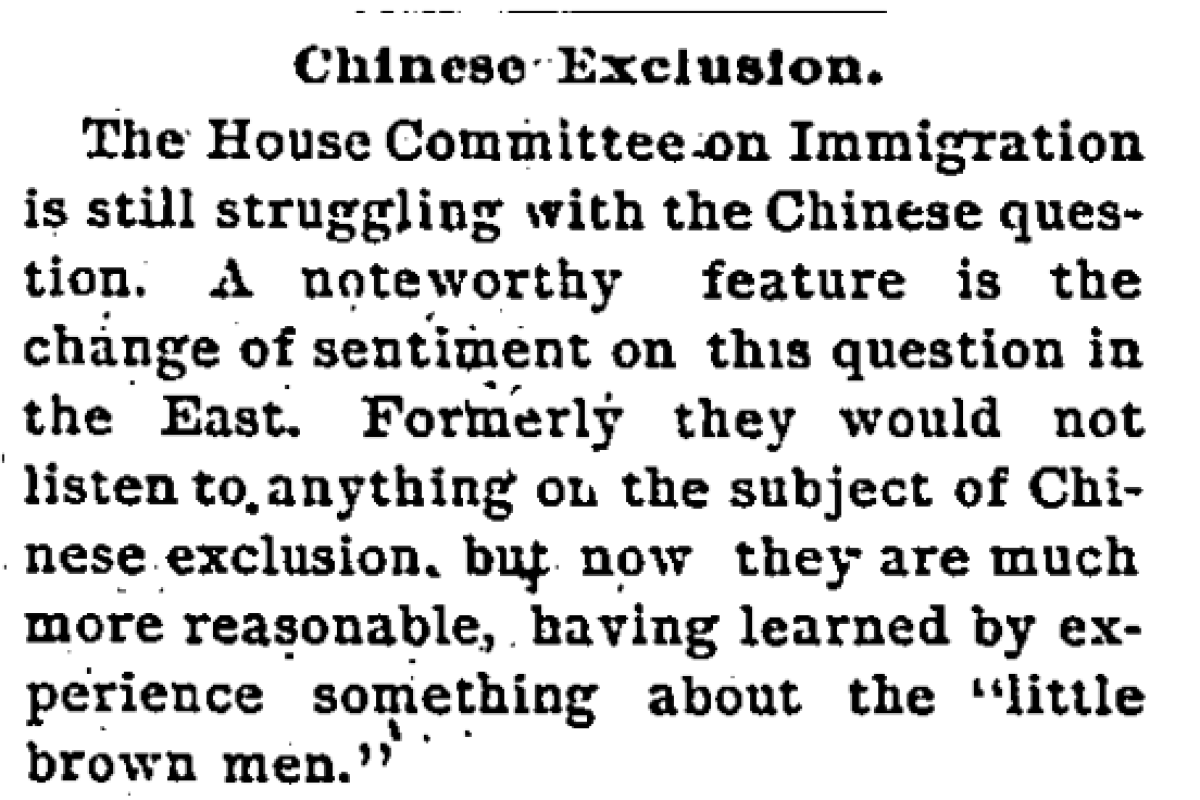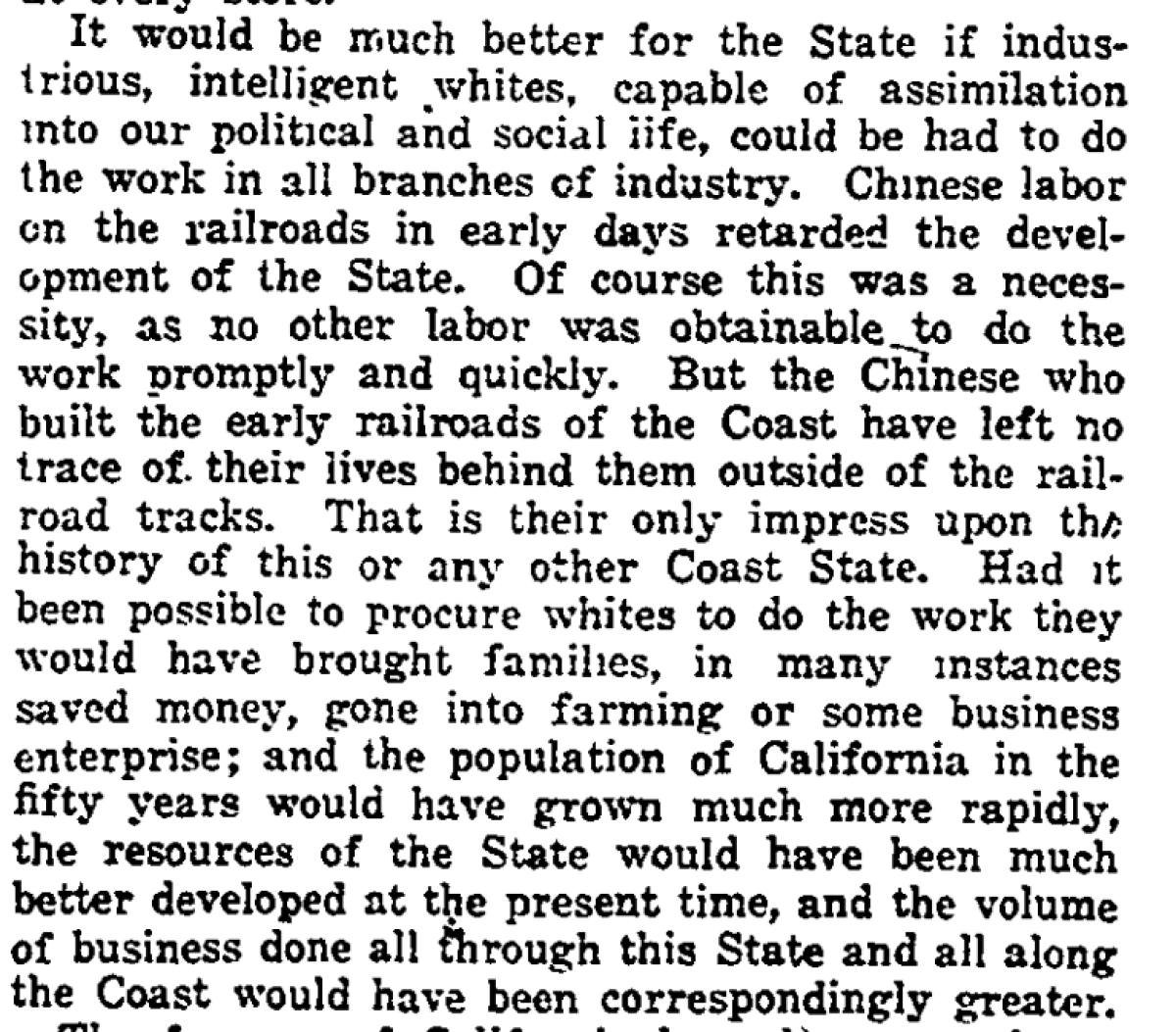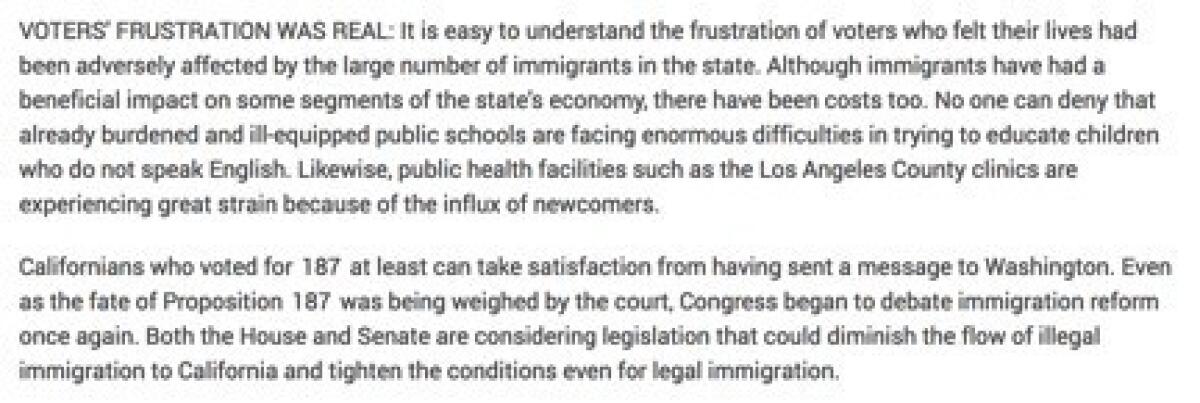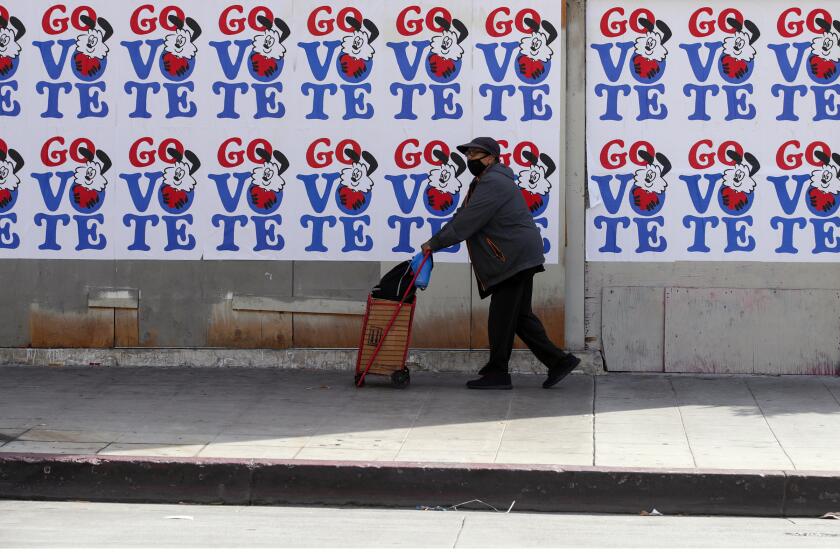Opinion: California was once a bastion of xenophobia and racism. If we can change, so can the rest of the country

The election of
Senate President Pro Tem Kevin de Leon (D-Los Angeles) recently introduced SB 54, which epitomizes the impulse to resist federal policies that contradict “California values.” SB 54 would prevent the use of state and local resources to assist federal deportation efforts.
But have we forgotten California’s history in leading the nation toward racist and exclusionary policymaking?
Although California is currently championing immigrant rights, this was not always the case. During historical periods when our nation passed legislation restricting or barring immigration, California led the way and established its own exclusionary rules at the state and local level. For example, the national Chinese Exclusion Act of 1882 was preceded by state legislation that proved to be more detrimental to the Chinese community because it didn’t just restrict their immigration, it prohibited work by Chinese people.
California set immigration policy that helped shape the direction of regulation and demographics in the United States. The California Constitution of 1879 institutionalized racism against Chinese immigrants statewide in response to local racist policies and widespread anti-Chinese sentiment among the state’s white residents. The Times’ editorial board back then shared these sentiments, opining that the labor of the Chinese on the California railroads “retarded the development of the state” and that the state would have been better off with “intelligent whites” working “in all branches of industry.”


Anti-immigrant sentiment arose again in state politics in the 1920s when California turned attention to Japanese exclusion. The files of the Los Angeles Times offer a glimpse into the “spirit” of Californians determined to protect “white” state values against the Japanese and to attract allies in that effort. Lest the point be lost, the Editorial Board expressed itself in all caps:

In fact, The Times called upon the federal government to join the fight “in conjuring away the yellow peril”:

California’s racist policies haven’t been directed exclusively at Asians — witness the state’s track record on Mexican immigration. History credits the 1930s with the first major immigration crackdown on Mexican immigrants. Early into the ’30s, over 15 million Americans, about one quarter of all wage earners, were unemployed. Officials believed that repatriation of Mexican American families to Mexico could alleviate the rising unemployment and welfare costs here. In Los Angeles County, for example, one strategy was to pay train fare to the border for trainloads of Mexican American families. It was also common to threaten an end to safety net programs unless a family agreed to leave.
In 1954 the United States witnessed the racist named Operation Wetback, an anti-immigration effort that was declared “the most massive and highly organized effort in U.S. history to deport illegal immigrants.” In a Times article from 1955 commemorating the operation’s anniversary, Police Chief Joe Goff credited this organized immigration effort with the 63% crime drop in Calexico. The Times celebrated the success of the operation, noting that “the Mexican wetback has been virtually erased from the American scene.”

In more recent history, California voters in 1994 passed Proposition 187, a ballot measure to bar people in the country illegally from receiving public services. The ballot measure was deemed unconstitutional by U.S. District Judge Mariana R. Pfaelzer on the grounds that immigration policy was federal business, yet this case displays the attitude of Californians who voted in its favor. The Times wrote in 1995 that California voters sent a message to Washington, one that led a national move “that could diminish the flow of illegal immigration to California and tighten the conditions even for legal immigration.”

There is thus a high level of historical irony to California positioning itself as a leading voice against Trump’s immigration policy. California undoubtedly led America toward xenophobic and racist regulations throughout history. However, this historical irony can be a symbol of hope for our nation. If California can change in its racist impulses, so can the rest of the country.
Maribel Garcia Ochoa is a public affairs fellow with Coro Southern California. Email her at [email protected].
Follow the Opinion section on Twitter @latimesopinion and Facebook
A cure for the common opinion
Get thought-provoking perspectives with our weekly newsletter.
You may occasionally receive promotional content from the Los Angeles Times.







